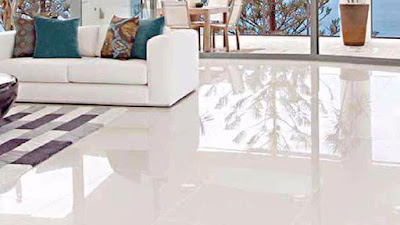Difference between floor tiles and wall tiles
What's the difference between Wall Tiles and Floor Tiles?
- Tiles designed for use only as wall tiles are often lighter and thinner than tiles on floors.
- The glazes used in making a wall tile are often different from those used for floor tiles, and are not equipped to withstand abrasive forces from foot traffic.
- Various tiles may be made from various types of clay and different types of glaze. Inherently, tiles created solely for walls are not meant to be load bearing.
- Floor tiles may of course be placed on a wall, but they will still be considered "floor tiles." For example, many of our 30 x 60 tiles are floor tiles, but they're mounted more often than not on the bathroom walls. Yet they continue to be called floor tiles.
Steps to decide to buy tiles
- Step 1. Such tiles are unrated, and can only be used on walls.
- Step 2. Such tiles are only suitable for areas of very light traffic, where shoes are unlikely to be seen, such as the ensuite upstairs. Only a small amount of rough treatment may easily mark or scrape the surface of the tile.
- Step 3. Home areas that are not exposed to the highest traffic levels or are unlikely to come into contact with substantial volumes of soil or other abrasive materials. So the kitchen and hall wouldn't count here, but a living room and bathroom would.
- Step 4. Any residential area, or even any light commercial areas where there is no undue presence of abrasive dirt etc.
- Step 5. Any residential area, commercial areas such as restaurants, exhibition spaces, hotel rooms, showrooms, where traffic can be heavy.
- Step 6. Substantial or very heavy traffic, including shopping malls, retail exits, hotel lobbies, and industrial workplaces. In other groups these tiles are usually more expensive than tiles.
Difference between wall tiles and floor tiles:
Tiles are typically used in bathrooms, wet-rooms, and kitchens because of the impervious or vitreous quality of ceramic and porcelain tiles, and the hardened glaze that is normally fired onto their top surface. At a start, there should be a tiled backsplash of wall tiles in hand basins and in the area around bathtubs. It is to prevent damage to the water on painted plaster surfaces in a home.
A high gloss finish is provided at many types of wall tiles. Because of the slip risk, having high gloss tiles on the bathroom floors is less common.
Finding wall tiles with decorative embellishments is more common than is the case with floor tiles. Often colored lines, trims, borders, and listellos are inserted within wall tile installations. The mosaics that include a mixture of small pieces of polished travertine, pearl mother, glass, and aluminum rubbed. Purely decorative, the intention is to eliminate the visual monotony of a wide, unicolored wall. It looks fantastic in a expensive, floor-to-ceiling tiling installation.
View a great selection of beautiful floor or wall tiles, Tileprint, Bangalore.
If you are looking for Tiles , Taps (Faucets) , Sanitaryware , Plywood , Laminates , Veneers and associated products then TILEPRINT is the place to be.



Comments
Post a Comment